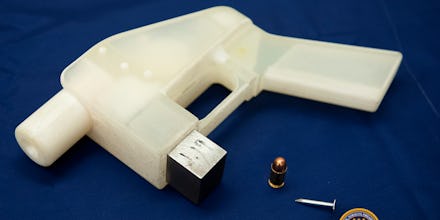3D Printed Guns Are Now Banned in the UK — Will the U.S. Be Next?

The news: The UK Home Office revised its firearms policy to include language that makes the manufacture, sale, or possession of 3D guns illegal. Great Britain has long had more restrictive gun policies than the United States — in fact, the UK has some of the strictest gun regulations in the world — but adding specific provisions to contrast 3D guns is a groundbreaking decision.
In the U.S., the House failed to pass a measure updating the ban on these weapons earlier this month, when they voted to renew the 1988 Undetectable Firearms Act. 3D guns contain very little metal, which means they do not set off metal detectors and can easily be concealed. Many have advocated for an explicit ban on the weapons in the past year. Current U.S. gun control laws do not address 3D guns at all, much to the concern of many citizens and politicians, could this latest UK development lead to a U.S. policy change?
The background: The New York Post recently ran a piece on how inexpensive it is to print your own AR-15. The author estimates that after the costs of a 3D printer (approximately $2,000), it takes $452 and about 24 hours to put together the semi-automatic rifle. While this technology has been around for about 10 years, 3D guns began to garner significant media attention earlier this year, when a group called Defense Distributed began posting blueprints for DIY rifles online. The group was started by Cody R. Wilson, a law student in Texas, to “defend the civil liberty of popular access to arms,” and was the subject of a recent Vice Motherboard documentary “Click. Print. Gun.” Several senators have expressed concern that these weapons, in addition to being difficult to detect at security checkpoints, will soon become ubiquitous, as 3D printing technology becomes less expensive.
The takeaway: Regardless of how one feels about gun control laws in the United States, increasing regulation of 3D rifles is imperative. These weapons will soon be cheap to make and easy to obtain, creating an influx of unregulated guns on the market — something the United States definitely does not need.